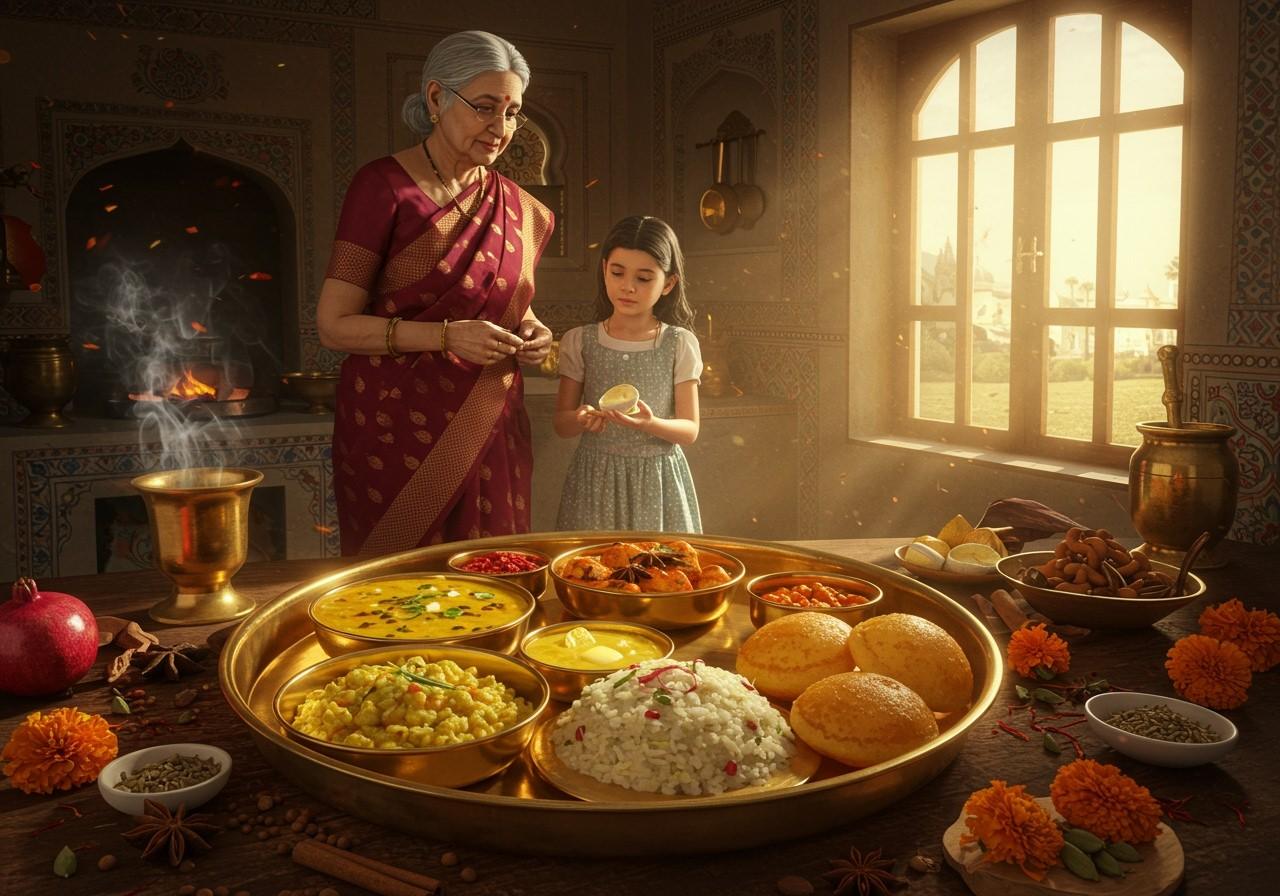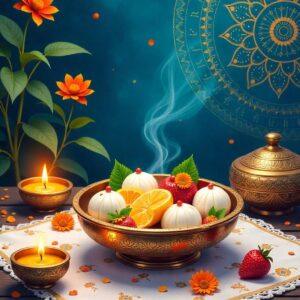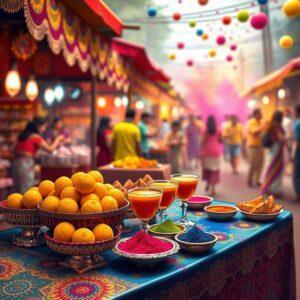
Embark on a culinary voyage through Central India, a region celebrated for its rich history, vibrant culture, and diverse cuisine. Food in this area transcends mere sustenance; it’s a cultural narrative shaped by geography, climate, and historical influences. Central India embodies a fusion of flavors, drawing inspiration from tribal communities, royal kitchens, and agrarian societies. Traditional cooking methods and locally sourced ingredients play a vital role in preserving authentic tastes, with an emphasis on vegetarian cuisine, reflecting deeply rooted spiritual beliefs.
Central India’s Culinary Landscape
Central India’s gastronomic scene is defined by its geographical and cultural diversity. The terrain, ranging from lush forests to fertile plains, significantly influences the availability of ingredients and the variety of dishes. Each state, including Madhya Pradesh, Chhattisgarh, and Jharkhand, contributes unique characteristics to the region’s culinary identity. Tribal influences are prominent, with indigenous ingredients and cooking techniques playing a significant role. Historical trade routes and cultural exchanges have also left their mark on Central India’s food culture. Community feasts and food-sharing traditions strengthen social bonds and ensure cultural continuity. Traditional markets and street food vendors offer an authentic taste of the region’s culinary heritage.
Signature Dishes of Central India
Central India’s culinary tapestry is woven with vibrant flavors and iconic dishes, each narrating a tale of tradition and innovation.
- Bhutte Ka Kees: A popular street food from Madhya Pradesh, made with grated corn seasoned with spices and herbs, creating a unique and enchanting flavor.
- Dal Bafla: A beloved classic from Madhya Pradesh, featuring baked wheat dough balls served with a spicy lentil curry, embodying warmth and hospitality.
- Chilka Roti: A staple in the tribal heartlands, this nutritious pancake made from rice and lentils nourishes both body and soul.
- Sabudana Khichdi: A must-have during fasting periods, this dish combines tapioca pearls, peanuts, and spices, reflecting spiritual practices while offering a burst of energy.
- Mawa Bati: An indulgent dessert combining khoya, nuts, and sugar, showcasing the region’s love for sweets.
- Poha: A light and refreshing breakfast dish made from flattened rice, flavored with mustard seeds, turmeric, and curry leaves. As per updated info, it’s a popular breakfast dish in the region.
- Bhopali Gosht Korma (for non-vegetarians): A rich and aromatic slow-cooked meat curry infused with spices.
- Seekh Kebab (for non-vegetarians): As per updated info, it’s a favorite among non-vegetarians in the region.
- Palak Puri: Updated info suggests it’s a healthier version of the traditional Puri and a part of Central India’s culinary offerings.
Vegetarian Delights
Central India’s vegetarian cuisine is a celebration of nature’s bounty.
- Dal Pithi: Wheat dumplings cooked in spiced lentil broth, offering comfort and nutrition.
- Baigan Bharta: A smoky eggplant dish showcasing the art of roasting and mashing vegetables to create a depth of flavor.
- Aloo Chat: A tangy potato snack, a staple at celebrations and gatherings.
- Fara: Steamed dumplings made from rice flour and filled with spiced lentils or vegetables, reflecting the region’s culinary inventiveness.
- Khopra Patties: Coconut-filled snacks revealing the Maratha influence in Central Indian cuisine.
Traditional Cooking Techniques
- Dum Cooking: Slow-cooking ingredients in sealed pots to preserve flavors and aromas.
- Sigdi: Using clay stoves to impart a unique smoky flavor to dishes.
- Bamboo Cooking: Cooking food inside bamboo sticks over an open fire, infusing dishes with earthy flavors.
- Bhatti: Open-fire grilling, a communal practice enhancing the flavors of meats and vegetables.
- Earthen Handi Cooking: Simmering curries in earthen pots for a beautiful melding of spices.
- Stone Grinding: Preparing spice blends and chutneys using traditional stone grinding methods.
Festivals and Rituals
Food plays a central role in Central India’s vibrant festivals and rituals, symbolizing warmth, unity, and devotion.
Modern Influences and Fusion Cuisine
Globalization has introduced new flavors to Central India’s culinary landscape, blending tradition with modernity.
Essential Ingredients for Central Indian Cuisine at Poojn.in
Central Indian cuisine relies heavily on seeds and spices for its distinctive flavors. At Poojn.in, we offer premium-quality watermelon seeds (Char Magaz), a vital ingredient in many Central Indian dishes. These natural white, unpolished watermelon seeds are perfect for:
- Traditional recipes and garnishing.
- Making pastes for gravies and adding texture to special dishes.
- Religious offerings and ceremonies.
Our watermelon seeds are available in convenient packaging sizes (100g, 250g, 400g, and 900g) in sealed PP pouches to maintain freshness. These raw, wax-free seeds are sourced directly from trusted suppliers. For bulk orders and wholesale pricing, connect with us on WhatsApp at +91 7908548235. We deliver across India. Visit Poojn.in or download our app for more products.
Embracing Central India’s Culinary Heritage
Central India’s culinary journey is a feast for the senses, a harmonious blend of tradition and innovation. Each dish embodies the region’s rich history, vibrant culture, and the wisdom passed down through generations. From the comforting Dal Bafla to the refreshing Poha, these flavors connect us with our roots and invite us to explore new tastes. As we savor Central India’s culinary delights, we celebrate not just the food but the stories, people, and traditions that make it extraordinary.
FAQs on Central India’s Culinary Delights
What are some famous foods from Central India? Central India is renowned for unique dishes like Poha, Bhutte Ka Kees, Dal Bafla, Seekh Kebab and Palak Puri, each with a distinct traditional touch and flavor.
Why is Poha so popular in Central India? Poha’s popularity stems from its simplicity, taste, and nutritional value as a light breakfast option.
What ingredients are common in Central Indian cuisine? Common ingredients include wheat, rice, lentils, and spices like turmeric, cumin, and coriander.
How is Dal Bafla different from Dal Baati? Dal Bafla, similar to Dal Baati, is boiled before baking, giving it a unique texture, and is often served with spicy lentil soup.
Is vegetarian food common in Central India? Yes, vegetarian food is prevalent in Central India, with many traditional dishes centered around grains, pulses, and vegetables.
What is Bhutte Ka Kees? Bhutte Ka Kees is a spicy corn dish made with grated corn, spices, and lime, especially popular during the monsoon season.
Are Central Indian dishes spicy? While some dishes have a spicy kick, Central Indian cuisine generally balances flavors with mild spices and herbs, catering to various palates.
Can I find Central Indian dishes in other parts of India? Yes, many Central Indian dishes have gained popularity across India and are available in restaurants and food stalls in various regions.


